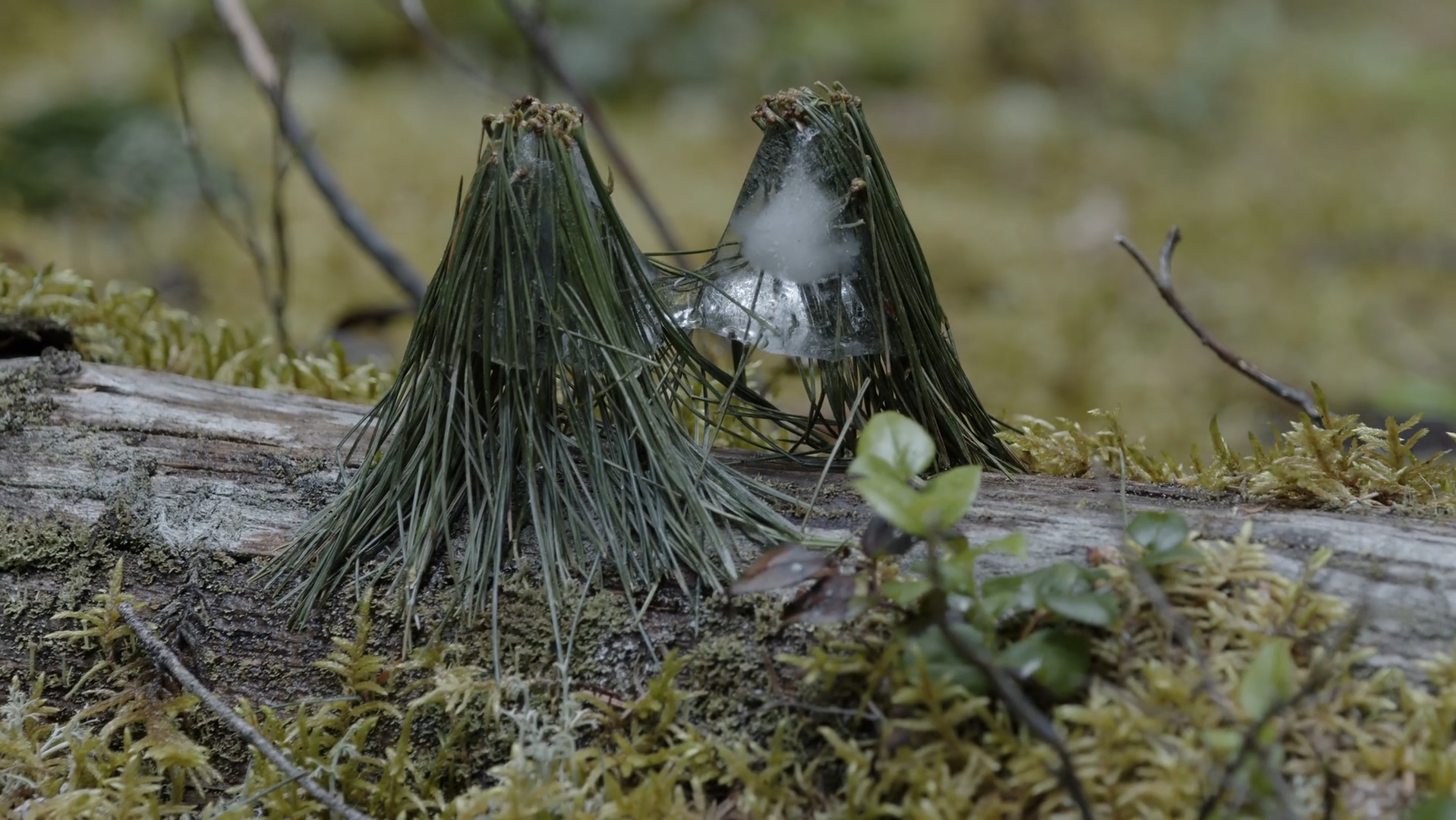About the Artist
Aa Canadian/New Zealand craft artist who completed an MFA in 1992 from the University of Minnesota in sculpture with an interest in architectural history. Her work focuses on materiality and installation work and she combines technologies such as scanning, 3D printing and vacuum forming with the handmade.
Her work has been shown in New Zealand, Australia, Korea, Japan, France, Ireland and Canada and included in International Exhibitions such as The Cheongju International Craft Exhibition (Canadian Pavilion, 2009), Ranamok Glass finalist (Australia 2012) and ‘Craft and Innovation’ in Canberra, Australia (2016). Her work from the ‘Wonderment’ Series was exhibited at the Craft council of BC in 2019 and the Salt Spring National Art Prize Exhibition.
Due to the impermanence of her current installations she has joined forces with her filmmaker son Seb Judge in order to capture and interpret her work with the moving image.
About the Works
“Forest Floor” is a poetic film-documentation of a temporary sculptural work installed in a Forest. It is born out of the rhythms and materials of the land: pine needles, lichen, flora, mosses are reconfigured into molds that have originated from 3D prints, and then delicately placed back into their location. For those who stumble across the work it is meant to dissolve the white-walled Modernist architecture of the Art Gallery and give a voice to the environment that has always waited patiently on the periphery.
By using technology as part of my process I remove the artist’s hand and decentralize the artist: I call the forms ‘confounded', as if they have landed from somewhere else, yet they are wholly melded into the forest by material choice. The work is an encounter that shifts with the weather, with time and slowly becomes acclimated back into the Forest. The Forest also shifts as it makes way for the new elements it is familiar with, perhaps in new places, and in forms it has not seen before.
The details reveal the subtle beauty of what is contained and often unnoticed on the land and it invites the viewer to acknowledge the space they are in, and to the history of the forest that embraces them. If it were given a voice, perhaps it would tell us that we are the ones who are standing on the fringe or the periphery of its boundless, timeless, and long-standing architectural setting.

